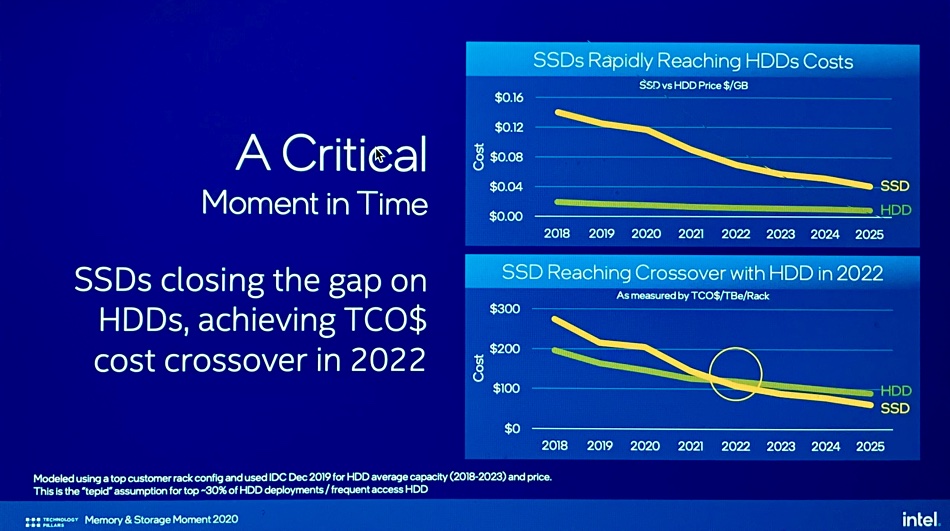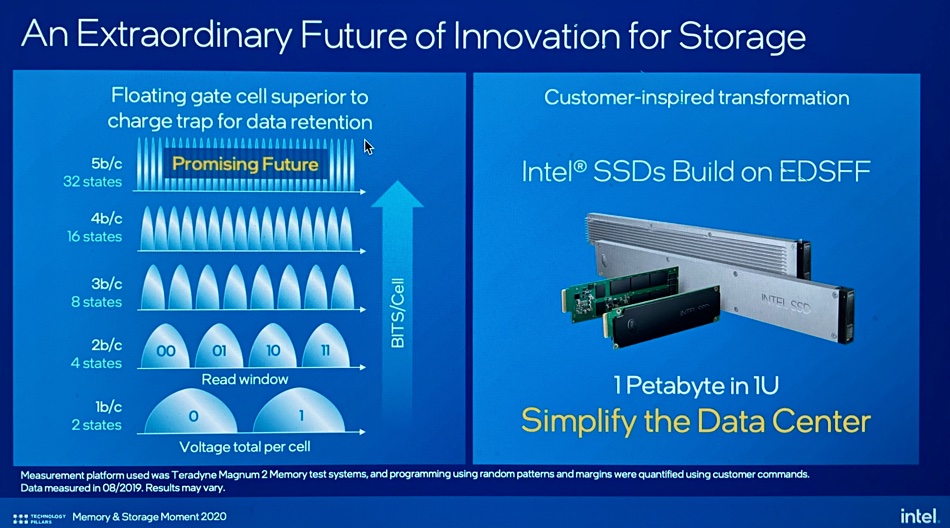Intel says SSDs will reach total cost of ownership crossover with hard disk drives in 2022. It’s also launching new SSDs, and sees PLC – that’s five bits per cell – NAND being used in its future SSDs.
Intel’s Rob Crooke, general manger of its Non-volatile Storage Group, said during a Memory and Storage Moment briefing today that 3D multi-layer NAND developments would enable a total cost of ownership cross-over between SSDs and hard drives in about a year’s time.

That will enable SSDs to replace hard drives in more of the storage drive market.
A major reason for this, we’re told, is that penta-level cell – aka PLC or five-bits-per-cell – NAND will enable a lower $/TB and higher capacities for SSD. Crooke said Intel has solid plans to move to PLC in the future, and: “We’re on the right path to replace HDDs.”

Such SSDs will enable 1PB of capacity in 1U machines using the E1.L “ruler” form-factor SSD.
Crooke also introduced three new Intel 3D NAND SSDs:

There is an SSD 670p for client systems, using QLC (four-bits-per-cell) NAND, and two data-center-grade drives: the TLC (three-bits-per-cell) D7-5510 and the QLC 144-layer D5-P5316. The D7-5510 has 3.4 and 7.68TB capacities in its U.2 (2.5-inch) form factor.

The D5-P5316 comes in 15.36 and 30.72TB capacities in U.2 and the E1.L format. It has a PCIe Gen 4.0 interface, and apparently goes faster than Intel’s previous generation SSDs. This drive enables 1PB in 1U, and a 40PB rack.
The Intel claim that HDD-SSD TCO cost crossover will happen as early as 2022 is unexpected and dramatic. If other NAND fabs and SSD manufacturers are of a similar mind, the HDD world’s core market – the high-capacity nearline drive – could be facing a long and slow decline.
Crooke, by the way, will run the Intel NAND foundry and SSD business while it is being transferred to SK hynix and then join that South Korean giant.







